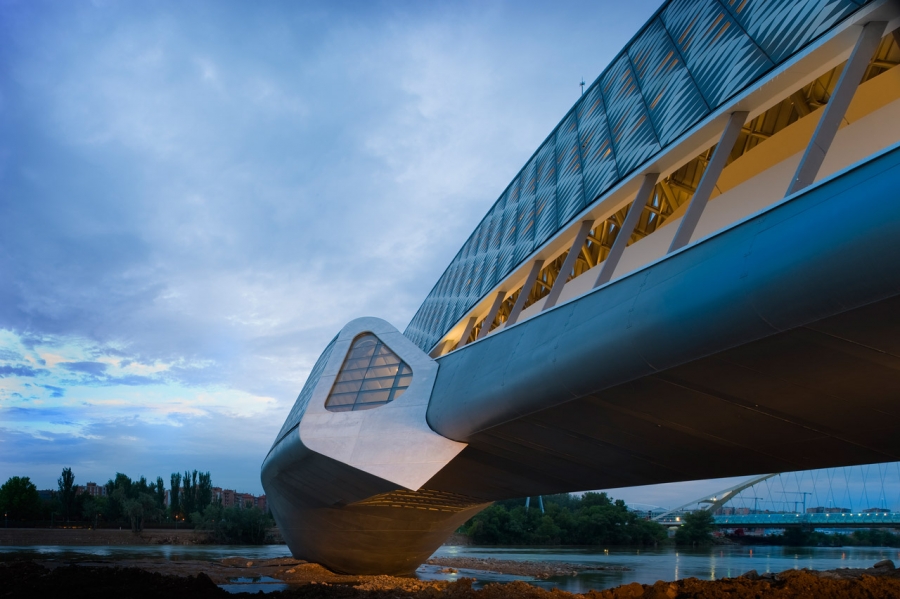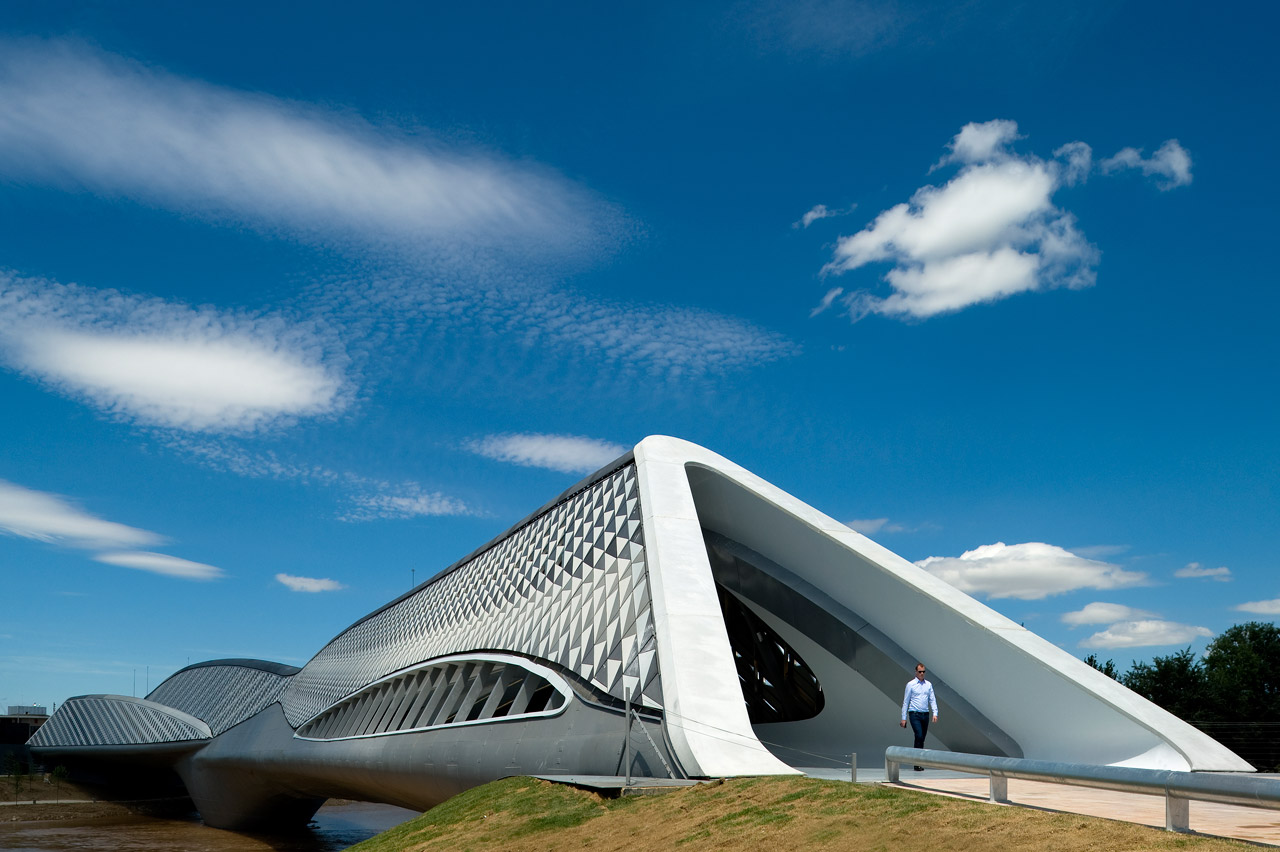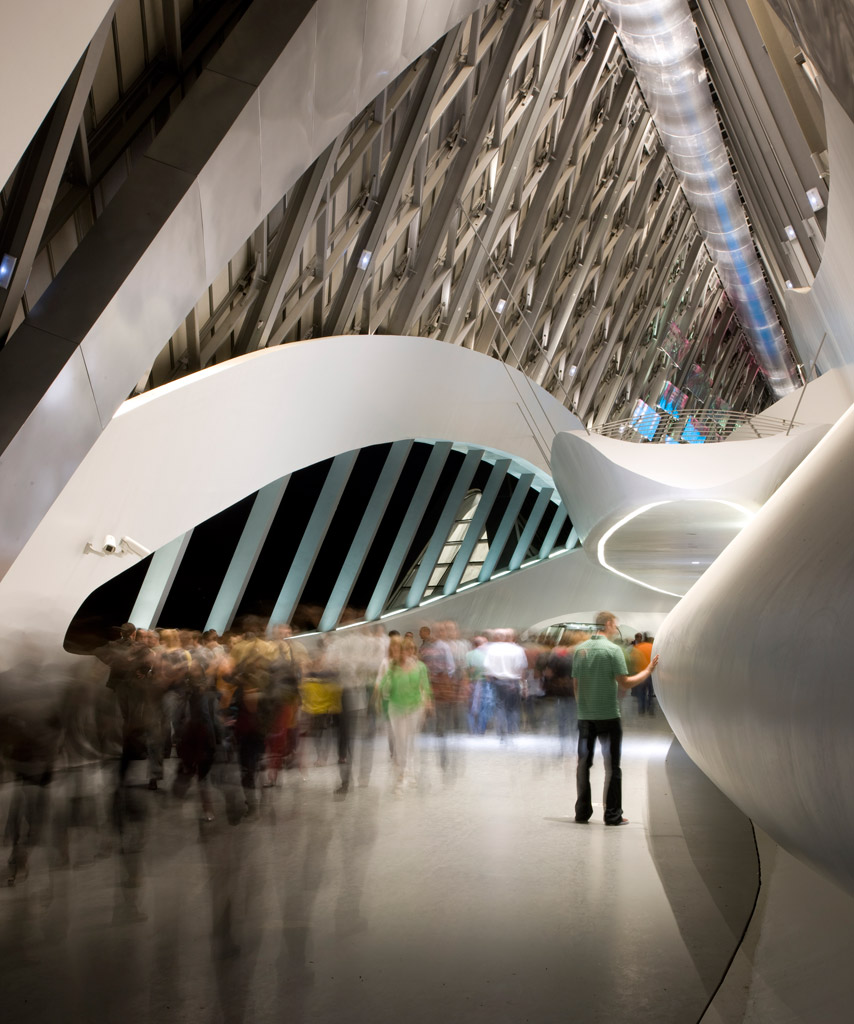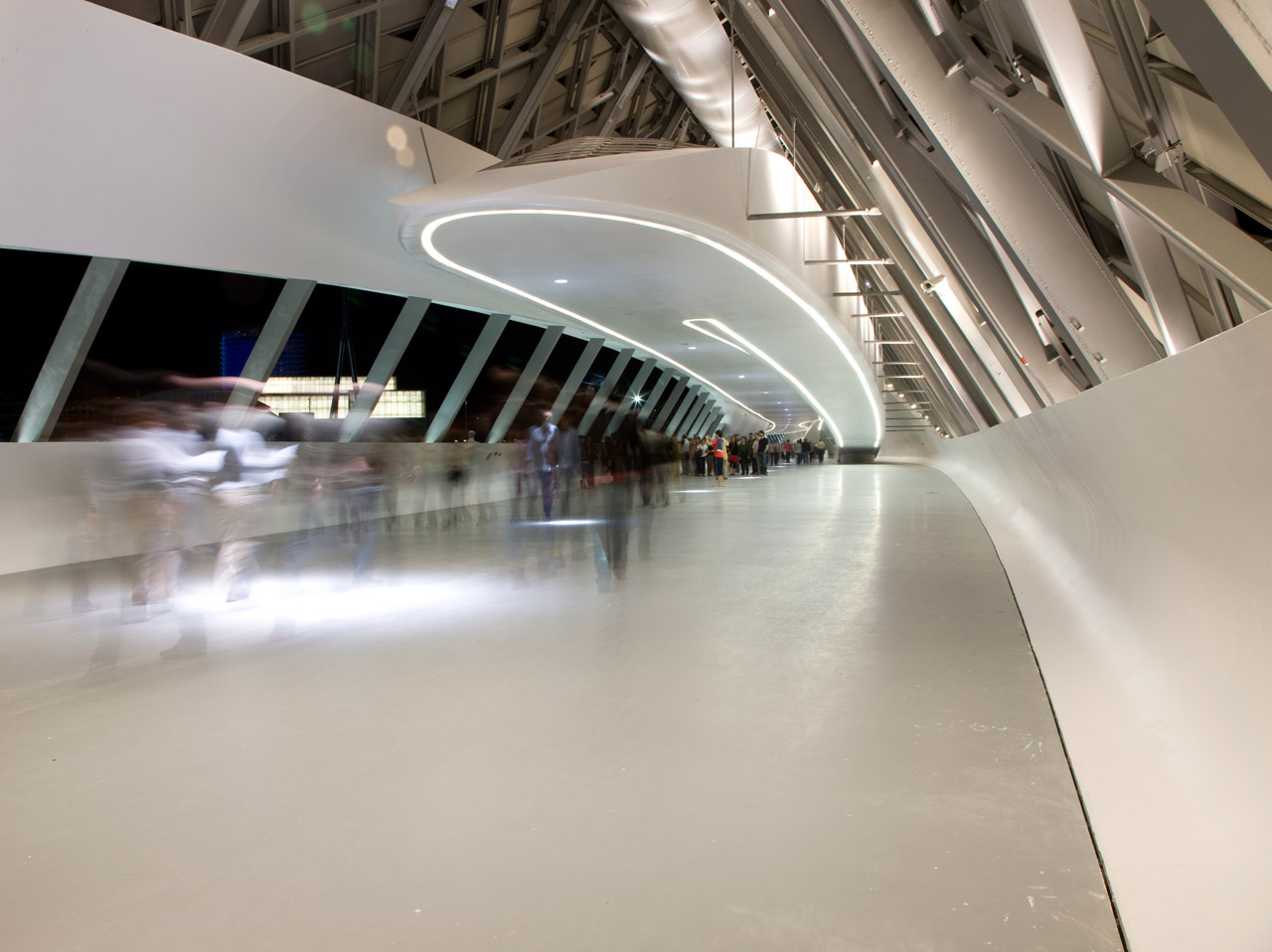Zaha Hadid's Bridge Pavilion in Zaragoza
Zaha Hadid's signature style has made the Zaragoza Bridge Pavilion (Pabéllon Puente) an esteemed landmark; this combination bridge and exhibition space was built for Expo 2008 may see development into a museum for new technologies and water sciences.
 Image courtesy of Fernando Guerra
Image courtesy of Fernando Guerra
As far as world-renowned architects are concerned, most would agree that Dame Zaha Hadid is at the pinnacle of her field. Her distinct architectural style has been acclaimed internationally, earning her a myriad of prestigious architectural awards including the Pritzker Architecture Prize in 2004 and the Stirling Prize in 2010 and 2011.
Today, Hadid is considered an innovative architectural leader by many and often seen as a pioneer in research and design investigation. Typically, a Hadid project is instantaneously recognizable thanks to her commitment to the state-of-the-art technology she uses to create her distinct, futuristic structures. It’s this signature style that turns most Hadid projects into esteemed landmarks, which is certainly the case with the Zaragoza Bridge Pavilion.

The Bridge Pavilion was built for the 2008 Expo that took place in the Spanish city of Zaragoza. More than 100 countries participated in the three-month Expo, which attracted more than 5.5 million visitors to the city. Much more than just a pedestrian walkway, the 290' long Bridge Pavilion created an interactive exhibition space that welcomed the masses to the expo as they crossed the Ebro River. At the time, the exhibition areas were used as an extension of the Expo’s theme, “Water and Sustainable Development." For visitors crossing the Ebro River to the Expo’s main auditorium, the bridge quickly became the most emblematic symbol of the event, giving both the city and the bridge worldwide recognition.

The ultra-modern stucture was built using an interlocking diamond-shaped system that connects three elongated steel “pods” that run diagonally across the shores of the Ebro River. The center of the bridge rests on a small island in the middle of the river, where 220'-deep central piles were used for support purposes. These supports, along with the interconnecting pods that replace the typical triangular truss system, help brace and distribute the weight of the 7,000-ton bridge evenly. This innovative pod system served a dual purpose of structural support and interior exhibition space, providing a practical and modern solution for the Expo’s multiple exhibition needs.
In congruence with the Expo’s theme of water sustainability, Hadid’s design implemented the aquatic theme in the interior exhibition space and throughout the bridge’s structure. The sinewy and curvaceous shape was designed to mimic the fluidity of the surrounding Ebro River.
The structure itself is constructed out of Glass Fibre Reinforced Concrete, while the outer shell of the bridge is layered with 29,000 triangular panels of fibreC by Rieder in varying shades of metallic grey. The result is a shark-skin façade that shimmers as it reflects the ever present Spanish sunshine and the water below. Some of the shingles rotate around a pivot, which allows for natural airflow and temperature control inside the exhibition spaces as well as interior light control.
Zaragoza’s Bridge Pavilion is pure Zaha Hadid: a magnetic, high-tech design that delivers fierce sophistication mixed with urban and spatial compatibility. Although some may point out that Zaragoza hasn’t exactly benefitted from the Guggenheim effect, there’s little doubt that the prestigious Hadid brand brings a large amount of recognition to this previously undervalued Spanish city.


Nicole Jewell
Nicole graduated from Georgia State University with a Post Graduate degree in Spanish to English Translation and a B.A. in Spanish and International Business. Presently living in Madrid, Nicole works as a freelance writer and translator and enjoys traveling around the Iberian peninsula taking photos of Spain's rich blend of historic and modern architecture. Her articles and photos have been published in various trade publications and websites.
Website: www.passtheham.com/

































